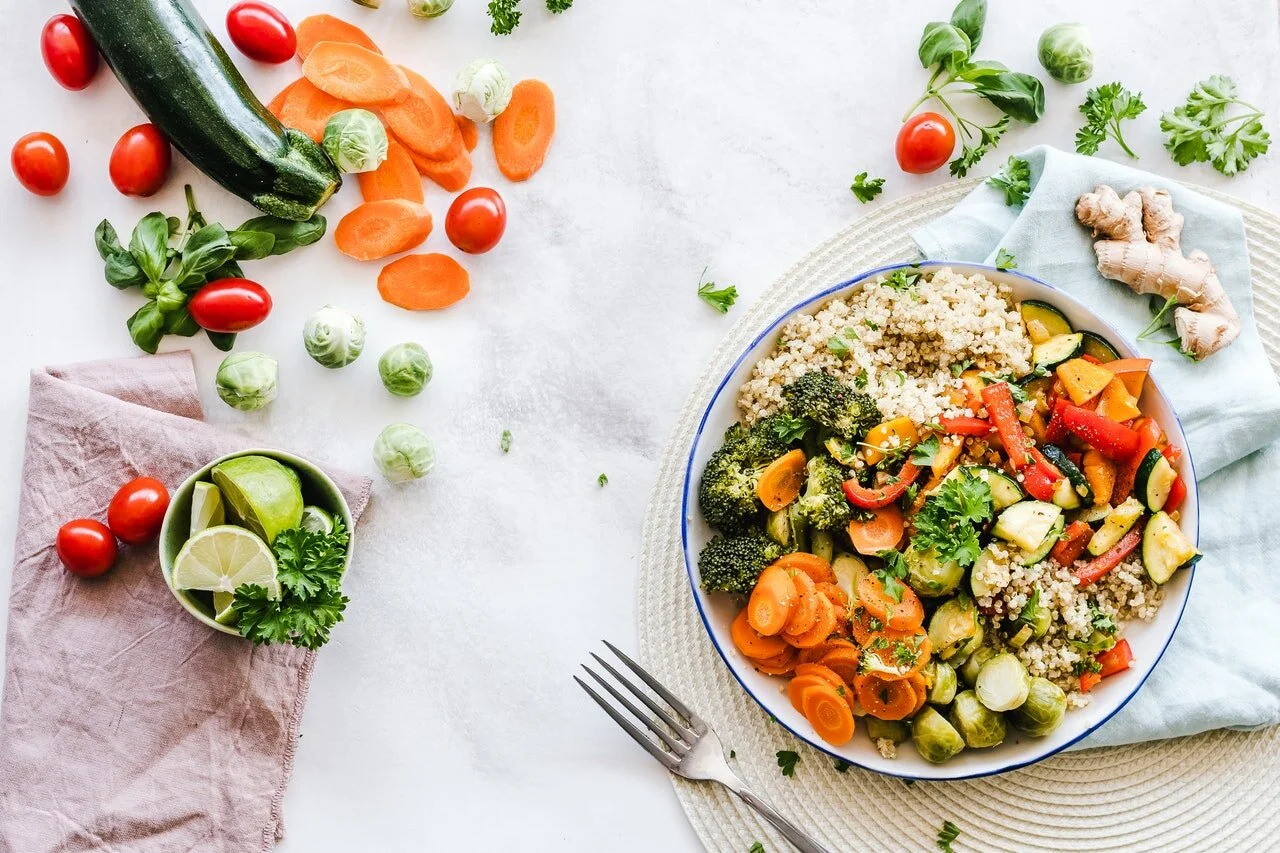Myth: Kids can eat whatever they want.
Reason Parents Give: “They’re children…they can get away with it.”
Many parents believe the myth that children can really eat whatever they want. As a parent, I wish this was true! It’s a lot of work showing my 17-month old son, Preston, a powerpoint presentation about the benefits of broccoli. Unfortunately, that first statement is false (and it makes sense why). Think about the period of 0-11 years of life for a child. Do you see any other period of physical and mental development as drastic in a human’s life? Absolutely not. The growth during this span of time is tremendous and pivotal to the physical foundation of one’s life. Why wouldn’t you give your child the proper fuel to not only build it efficiently and effectively but also protect the process with the best immunity? The good Dr. Fuhrman says it best:
I know what you’re thinking, “Good luck getting your kid to eat a plant-based diet.” I fully realize the difficulties here. At times, Preston will refuse everything until he gets what he wants (a very difficult customer at times!). You need to remember that our little ones aren’t much different from adults. Here are several strategies to dramatically improve your child’s diet and health without running for cover:
Personal Trainer Wisdom: Do you want to eat the same thing all the time? Unless it’s pizza, bacon, and ice cream, you’ll probably answer “No” (and rightfully so). Not only does neural stimulation greatly diminish after the 5th bite, but you also lose the mental and emotional excitement of eating a new dish. Poor Preston suffers whenever we discover he likes a new dish. “Do you like frozen peas and butternut squash, Master P?” Yessssssssssssssssssssssssssss! And then we feed him that for 10 straight meals until he throws it on the ground (and we don’t have a dog).
If your approach is on repeat too, I get it. Be mindful of your (and my) laziness, though. Chalk up a new food gobbled up in seconds as a victory but continue your experimentation. Your child has not tried the wide array of dishes that our world offers (and you most likely haven’t either). Move onto something new and help your child stimulate her senses. You’ll always have the peas and butternut squash in your back packet. And if it doesn’t work today, try the dish again in 4 weeks. Your child’s pallet and senses are evolving, and his or her preference or sensitivity will change over time too. With this being said,….
Personal Trainer Wisdom: Babies and kids are curious animals exploring the world. I honestly admit to restricting Preston’s scientist tendencies. After all, who wants to see their eggs cracked across the kitchen floor for the sake of learning physics! Appeal to your child’s curiosity by opening her senses to the culinary world. Not only let your child physically touch and feel the difference between different fruits and vegetables but also encourage her to smell and taste the bites of goodness (and it’s okay to get messy).
Take your experiment to a new level and assign a different ethnic style of food to each day. Simply add a combination of the seasonings and sauces most commonly found in that culture. For instance, if Monday is Mexican Day, add salsa and/or a taco seasoning to the meals (Tuesday can be Italian, Wednesday, can be Indian, etc.).
Personal Trainer Wisdom: If you’re serving a dish to your child, it’s a great time for you to eat too! Everybody loves company while they eat….and your child is no different. Ever been out to dinner at a restaurant and you notice a friend not ordering anything. You probably wondered, “Is Amy on a diet?”….”Is Amy upset?”…..”Does Amy not like me?”….etc., etc. Your child might be thinking the same about you in those moments! Interestingly, Preston will not eat at times but will not hesitate to sit on my lap moments later to lovingly (and grub-bingly) grab the same food off my plate. Little P just wants to share the experience with Papa!
Modeling good behavior goes beyond simply eating in front of your child. Eating the right foods is just as, if not more, important. What message are you sending while telling “No candy” to your child while eating the candy bar in front of her? It scares me to think about the things that Preston witnesses me doing. I recently started the habit of throwing his shoes to a rack near the door. What a surprise when I witnessed Preston tossing a bell strap across the daycare room….hitting the helpless victim, baby Liam, in the forehead. Shame on Papa! It’s a good reminder, though, that I have the opportunity to positively shape my son’s behavior by acting like a good healthy citizen (especially while eating dinner). Take the initiative and demonstrate healthy eating behavior by eating healthy food WITH your child.
Personal Trainer Wisdom: Let’s be honest: Your kids will be introduced to unhealthy foods at school, friends’ homes, parties, and more. It seems that many kids could eat an endless amount of candy and pasta (and they’ll let you know). If it’s a constant fight, not all is lost. Don’t forget that a piece of food can be a comprehensive experience for the senses. It’s possible to replicate the experience with a healthy substitute. Not surprising, Preston instantly loved pasta (who doesn’t?). Instead of feeding him the enriched flour, blood-sugar spiking versions found on most American tables; we cook a pasta noodle made of chickpeas. It is a wonderful, more nutrient-dense option with protein and fiber compared to the white flour, wheat, AND whole wheat versions. Although it may take research, there are other thoughtful substitutes for your child’s other unhealthy preferences too!
Personal Trainer Wisdom: Why has parenting become so complicated????? Life was so much easier when you can respond to your child’s Socratic question, “Why do I have to do this?” with the answer, “Because I said so.” Now you have to explain things and….wait, nevermind….we should’ve been doing this all along! Why? Because they don’t know better and need the message reinforced repeatedly (a lesson I now understand as an obligation of effective parenting). Your kids may not understand why they need hemp seeds, nuts, collard greens, and a piece of fish on one plate. They haven’t established any value of eating healthfully. Take the time to illustrate why it’s important so that your kids eventually make the same independent choices without your supervision.
Photo Credit:
Shaw academy .com–Could your child’s answer to eating healthy be sitting in your lap?
Reason Parents Give: “They’re children…they can get away with it.”
Many parents believe the myth that children can really eat whatever they want. As a parent, I wish this was true! It’s a lot of work showing my 17-month old son, Preston, a powerpoint presentation about the benefits of broccoli. Unfortunately, that first statement is false (and it makes sense why). Think about the period of 0-11 years of life for a child. Do you see any other period of physical and mental development as drastic in a human’s life? Absolutely not. The growth during this span of time is tremendous and pivotal to the physical foundation of one’s life. Why wouldn’t you give your child the proper fuel to not only build it efficiently and effectively but also protect the process with the best immunity? The good Dr. Fuhrman says it best:
The poor dietary habits of today’s children are contributing to the development of obesity, reduced brain function, higher incidence of allergies, asthma, autoimmune diseases, and emotional and behavioral disorders, such as depression and ADD. Poor nutrition also increases occurrence and severity of infections and results in chronically reoccurring infections such as sinusitis and otitis media (ear infection). It is also laying a foundation for poor academic performance, chronic disease later in life, violent behavior, and premature death. A Nutritarian diet is essential for a disease-free, healthy, and happy child.
I know what you’re thinking, “Good luck getting your kid to eat a plant-based diet.” I fully realize the difficulties here. At times, Preston will refuse everything until he gets what he wants (a very difficult customer at times!). You need to remember that our little ones aren’t much different from adults. Here are several strategies to dramatically improve your child’s diet and health without running for cover:
Introduce new foods…and try it again next month.
Personal Trainer Wisdom: Do you want to eat the same thing all the time? Unless it’s pizza, bacon, and ice cream, you’ll probably answer “No” (and rightfully so). Not only does neural stimulation greatly diminish after the 5th bite, but you also lose the mental and emotional excitement of eating a new dish. Poor Preston suffers whenever we discover he likes a new dish. “Do you like frozen peas and butternut squash, Master P?” Yessssssssssssssssssssssssssss! And then we feed him that for 10 straight meals until he throws it on the ground (and we don’t have a dog).
If your approach is on repeat too, I get it. Be mindful of your (and my) laziness, though. Chalk up a new food gobbled up in seconds as a victory but continue your experimentation. Your child has not tried the wide array of dishes that our world offers (and you most likely haven’t either). Move onto something new and help your child stimulate her senses. You’ll always have the peas and butternut squash in your back packet. And if it doesn’t work today, try the dish again in 4 weeks. Your child’s pallet and senses are evolving, and his or her preference or sensitivity will change over time too. With this being said,….
Add a variety of different tastes, smells, and textures (including different seasonings and sauces).
Personal Trainer Wisdom: Babies and kids are curious animals exploring the world. I honestly admit to restricting Preston’s scientist tendencies. After all, who wants to see their eggs cracked across the kitchen floor for the sake of learning physics! Appeal to your child’s curiosity by opening her senses to the culinary world. Not only let your child physically touch and feel the difference between different fruits and vegetables but also encourage her to smell and taste the bites of goodness (and it’s okay to get messy).
Take your experiment to a new level and assign a different ethnic style of food to each day. Simply add a combination of the seasonings and sauces most commonly found in that culture. For instance, if Monday is Mexican Day, add salsa and/or a taco seasoning to the meals (Tuesday can be Italian, Wednesday, can be Indian, etc.).
Model good behavior.
Personal Trainer Wisdom: If you’re serving a dish to your child, it’s a great time for you to eat too! Everybody loves company while they eat….and your child is no different. Ever been out to dinner at a restaurant and you notice a friend not ordering anything. You probably wondered, “Is Amy on a diet?”….”Is Amy upset?”…..”Does Amy not like me?”….etc., etc. Your child might be thinking the same about you in those moments! Interestingly, Preston will not eat at times but will not hesitate to sit on my lap moments later to lovingly (and grub-bingly) grab the same food off my plate. Little P just wants to share the experience with Papa!
Modeling good behavior goes beyond simply eating in front of your child. Eating the right foods is just as, if not more, important. What message are you sending while telling “No candy” to your child while eating the candy bar in front of her? It scares me to think about the things that Preston witnesses me doing. I recently started the habit of throwing his shoes to a rack near the door. What a surprise when I witnessed Preston tossing a bell strap across the daycare room….hitting the helpless victim, baby Liam, in the forehead. Shame on Papa! It’s a good reminder, though, that I have the opportunity to positively shape my son’s behavior by acting like a good healthy citizen (especially while eating dinner). Take the initiative and demonstrate healthy eating behavior by eating healthy food WITH your child.
Determine your child’s food preferences and find the healthiest versions.
Personal Trainer Wisdom: Let’s be honest: Your kids will be introduced to unhealthy foods at school, friends’ homes, parties, and more. It seems that many kids could eat an endless amount of candy and pasta (and they’ll let you know). If it’s a constant fight, not all is lost. Don’t forget that a piece of food can be a comprehensive experience for the senses. It’s possible to replicate the experience with a healthy substitute. Not surprising, Preston instantly loved pasta (who doesn’t?). Instead of feeding him the enriched flour, blood-sugar spiking versions found on most American tables; we cook a pasta noodle made of chickpeas. It is a wonderful, more nutrient-dense option with protein and fiber compared to the white flour, wheat, AND whole wheat versions. Although it may take research, there are other thoughtful substitutes for your child’s other unhealthy preferences too!
Explain the benefits of every meal and the reasons why you’re eating it too.
Personal Trainer Wisdom: Why has parenting become so complicated????? Life was so much easier when you can respond to your child’s Socratic question, “Why do I have to do this?” with the answer, “Because I said so.” Now you have to explain things and….wait, nevermind….we should’ve been doing this all along! Why? Because they don’t know better and need the message reinforced repeatedly (a lesson I now understand as an obligation of effective parenting). Your kids may not understand why they need hemp seeds, nuts, collard greens, and a piece of fish on one plate. They haven’t established any value of eating healthfully. Take the time to illustrate why it’s important so that your kids eventually make the same independent choices without your supervision.
Photo Credit:
Shaw academy .com–Could your child’s answer to eating healthy be sitting in your lap?































